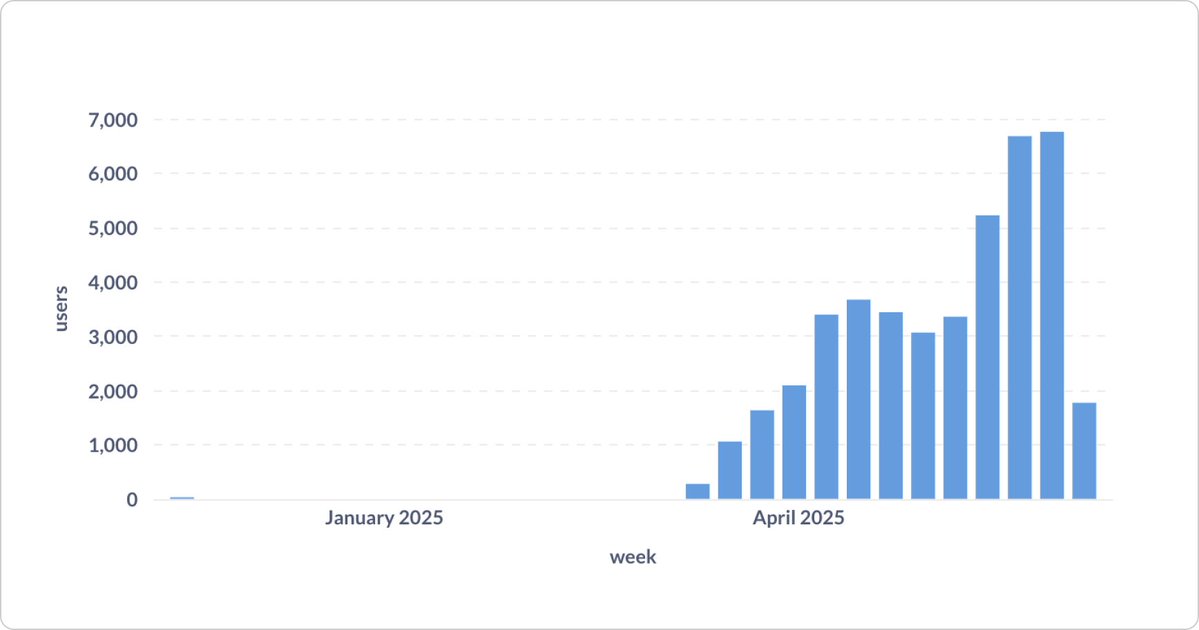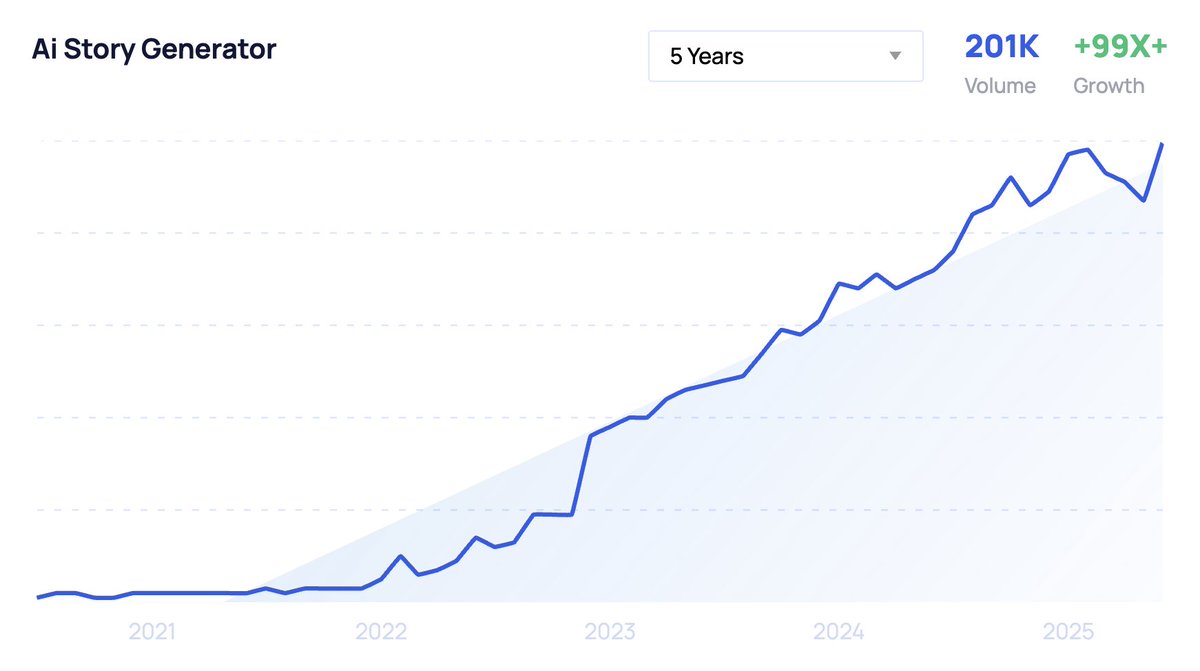You’re watching SEO change in real time.
It’s called LLM SEO (or LEO). And it’s already sending 100,000s of users to your competitors.
Here's how you can get ahead:
It’s called LLM SEO (or LEO). And it’s already sending 100,000s of users to your competitors.
Here's how you can get ahead:

What is LEO?
It’s about optimising your brand and content to become the answer in LLM platforms like ChatGPT, Perplexity, Claude, and now most crucially, Google’s AI Mode.
This isn’t just a new traffic source.
It’s a whole new search ecosystem.
It’s about optimising your brand and content to become the answer in LLM platforms like ChatGPT, Perplexity, Claude, and now most crucially, Google’s AI Mode.
This isn’t just a new traffic source.
It’s a whole new search ecosystem.
We’re actively managing SEO for 30+ sites.
And we’re already seeing 5–15% of their monthly traffic coming from LLM platforms (and growing MoM).
Most of the traffic (around 95%) is from ChatGPT, with the rest from Perplexity, Claude, and others.
This isn’t theoretical, it’s happening now.
And we’re already seeing 5–15% of their monthly traffic coming from LLM platforms (and growing MoM).
Most of the traffic (around 95%) is from ChatGPT, with the rest from Perplexity, Claude, and others.
This isn’t theoretical, it’s happening now.

Google is also rolling out AI Mode as we speak.
AI Mode adoption is growing 4% DoD. At this rate, it could hit 100% adoption by mid-September.
But I expect Google to eventually make it the default regardless.
AI Mode adoption is growing 4% DoD. At this rate, it could hit 100% adoption by mid-September.
But I expect Google to eventually make it the default regardless.

So if you’re not part of these AI answers, you’re not just missing out on a few clicks…
You’re missing out on the future of search.
And while traditional best practices still matter, the argument that LEO is “just SEO” is overly simplistic and naive.
LEO is about relevance engineering, not just rankings.
Here’s how it actually works:
You’re missing out on the future of search.
And while traditional best practices still matter, the argument that LEO is “just SEO” is overly simplistic and naive.
LEO is about relevance engineering, not just rankings.
Here’s how it actually works:
1. Brand mentions
LLMs verify trust by how often your brand is mentioned elsewhere.
Get featured on:
- High-authority websites
- Industry publications
- News outlets
- Forums
LLMs verify trust by how often your brand is mentioned elsewhere.
Get featured on:
- High-authority websites
- Industry publications
- News outlets
- Forums
Example:
Tally is getting 1,000s of new customers every month from their now #1 referral source, ChatGPT.
“We’ve invested in showing up [in forums, Reddit posts, blog mentions, and authentic UGC] by sharing what we learn, answering questions, and being human.”
Tally is getting 1,000s of new customers every month from their now #1 referral source, ChatGPT.
“We’ve invested in showing up [in forums, Reddit posts, blog mentions, and authentic UGC] by sharing what we learn, answering questions, and being human.”

2. Brand equity
LLMs personalise answers based on brand trust and sentiment.
- Monitor reviews
- Respond to feedback
- Build a positive reputation
A brand that’s trusted by users is trusted by AI.
LLMs personalise answers based on brand trust and sentiment.
- Monitor reviews
- Respond to feedback
- Build a positive reputation
A brand that’s trusted by users is trusted by AI.
Tip:
Use a tool like to track your visibility, understand the sentiment, compare to your competitors, and get actionable insights to improve your AI mentions.
(Launching this week only to waitlist signups) Mentions.so
Use a tool like to track your visibility, understand the sentiment, compare to your competitors, and get actionable insights to improve your AI mentions.
(Launching this week only to waitlist signups) Mentions.so

3. Being the source
LLMs favour authoritative, data-rich content.
Write and publish like a reference source, not a blogger.
- Update content regularly
- Keep a neutral, authoritative tone
- Avoid excessive personal anecdotes
- Back up with credible sources and data
- Write factual, unbiased, and data-rich content
LLMs favour authoritative, data-rich content.
Write and publish like a reference source, not a blogger.
- Update content regularly
- Keep a neutral, authoritative tone
- Avoid excessive personal anecdotes
- Back up with credible sources and data
- Write factual, unbiased, and data-rich content
Tip:
Most LLM platforms cite their sources.
Use this data to reverse-engineer how competing content and brands are getting featured in the answers instead of you.
Most LLM platforms cite their sources.
Use this data to reverse-engineer how competing content and brands are getting featured in the answers instead of you.

4. Passage-level SEO
LLMs pull passages, not pages.
Structure content so each paragraph can stand alone as the best snippet of information for a question.
- Include concise answers where relevant
- Write short, clear and focused paragraphs
- Use subheadings to segment topics logically
- Avoid burying key insights in long-winded text
- Include structured data (schema) where possible
- Make each passage easy to extract and cite by AI
LLMs pull passages, not pages.
Structure content so each paragraph can stand alone as the best snippet of information for a question.
- Include concise answers where relevant
- Write short, clear and focused paragraphs
- Use subheadings to segment topics logically
- Avoid burying key insights in long-winded text
- Include structured data (schema) where possible
- Make each passage easy to extract and cite by AI
5. Covering the conversation
LLMs “fan out” queries into sub-questions.
Don’t just answer your main keyword, cover all related questions.
- Research sub-questions users ask
- Add FAQs to address related questions
- Use supporting pages for each sub-question
- Link to related topic clusters with internal links
- Monitor forums and socials for emerging questions
- Structure your site so LLMs can easily find answers
LLMs “fan out” queries into sub-questions.
Don’t just answer your main keyword, cover all related questions.
- Research sub-questions users ask
- Add FAQs to address related questions
- Use supporting pages for each sub-question
- Link to related topic clusters with internal links
- Monitor forums and socials for emerging questions
- Structure your site so LLMs can easily find answers
Tip:
Question research is the new keyword research.
Tools like Semrush or AlsoAsked help you find related questions your audience is asking.
Question research is the new keyword research.
Tools like Semrush or AlsoAsked help you find related questions your audience is asking.

6. Crawlability
If LLMs can’t find your content, it’s invisible.
- Allow crawlers in robots.txt
- Check Cloudflare settings
- Submit XML sitemaps
- Monitor page speed
- Use clean HTML
If LLMs can’t find your content, it’s invisible.
- Allow crawlers in robots.txt
- Check Cloudflare settings
- Submit XML sitemaps
- Monitor page speed
- Use clean HTML
Tip:
Check server logs to see how search engines and AI crawlers (e.g. GPTBot or BingBot) are accessing your site.
Check server logs to see how search engines and AI crawlers (e.g. GPTBot or BingBot) are accessing your site.

Start with an audit:
- Your current visibility across all LLMs
- Prompt and content gaps vs your competitors
- Technical issues preventing AI from citing your site
Use a tool like to find this information (Launching this week only to waitlist signups).
Then create your 90-day optimisation roadmap.Mentions.so
- Your current visibility across all LLMs
- Prompt and content gaps vs your competitors
- Technical issues preventing AI from citing your site
Use a tool like to find this information (Launching this week only to waitlist signups).
Then create your 90-day optimisation roadmap.Mentions.so
That's a wrap!
If you enjoyed this thread:
1. Follow me @jakezward for more
2. Repost below to share it with others
If you enjoyed this thread:
1. Follow me @jakezward for more
2. Repost below to share it with others
https://twitter.com/1645041117216362498/status/1945105400233136418
SEO has changed. So did we.
Google, LLMs, AI Overviews. We help you capture search demand everywhere.
Let’s talk: contact.so
Not ready? Don't worry!
Get our free SEO resources to get started: contactstudios.co/download
Google, LLMs, AI Overviews. We help you capture search demand everywhere.
Let’s talk: contact.so
Not ready? Don't worry!
Get our free SEO resources to get started: contactstudios.co/download

• • •
Missing some Tweet in this thread? You can try to
force a refresh
















